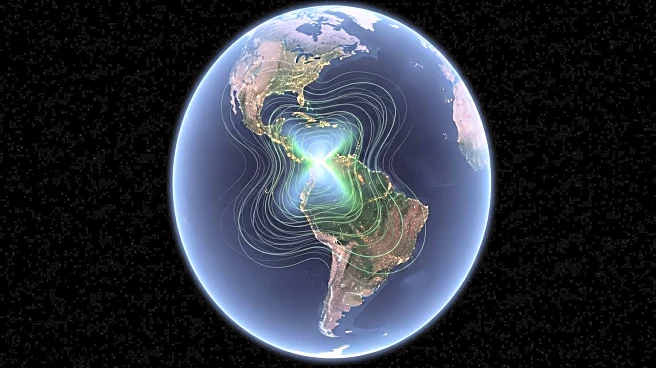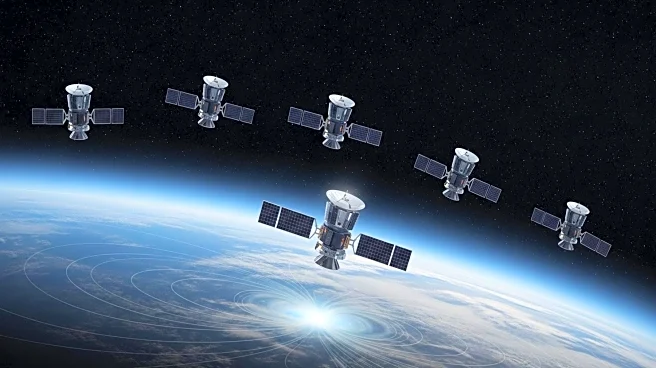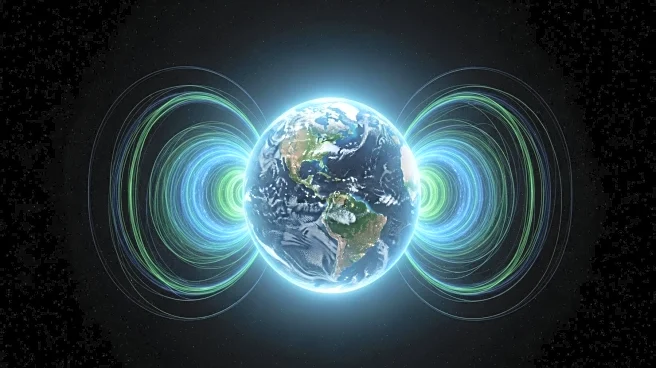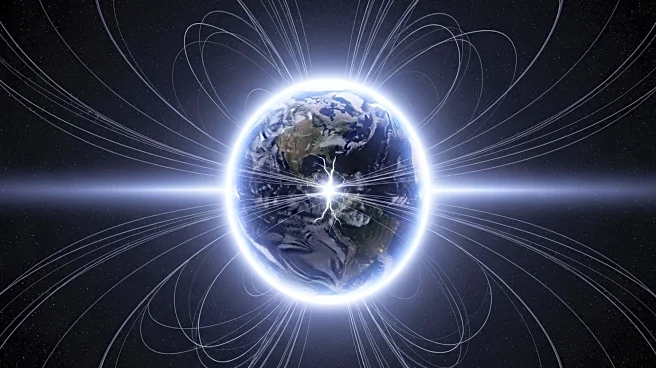What's Happening?
The European Space Agency's Swarm satellite constellation has been monitoring the South Atlantic Anomaly, a weak region in Earth's magnetic field, since 2014. Recent data indicates that this anomaly has expanded
eastward and weakened more rapidly since 2020. The anomaly, which has been present for approximately 11 million years, poses a risk to satellites and the International Space Station by allowing charged solar particles to penetrate Earth's protective magnetic barrier. This can lead to potential damage to spacecraft and communication blackouts. The anomaly's behavior is influenced by unusual patterns between Earth's molten outer core and rocky mantle, where the magnetic field behaves unexpectedly.
Why It's Important?
The expansion and weakening of the South Atlantic Anomaly have significant implications for satellite operations and space missions. As Earth's magnetic field provides crucial protection against solar radiation, its weakening in this region increases the risk of radiation damage to satellites, potentially disrupting communication and navigation systems. This development is particularly concerning for industries reliant on satellite technology, including telecommunications, weather forecasting, and global positioning systems. The anomaly's impact on satellite functionality could lead to increased costs and operational challenges for companies and governments involved in space exploration and satellite deployment.
What's Next?
Scientists will continue to monitor the South Atlantic Anomaly using the Swarm satellite data to better understand its dynamics and potential impacts. Further research may focus on mitigating the risks posed by the anomaly to satellite operations. Stakeholders in the space industry, including satellite manufacturers and operators, may need to develop strategies to protect their assets from increased radiation exposure. Additionally, advancements in satellite technology could be pursued to enhance resilience against such anomalies. The ongoing study of Earth's magnetic field will remain crucial for predicting and managing its effects on space-based infrastructure.
Beyond the Headlines
The findings from the Swarm satellite data highlight the complexity of Earth's magnetic field and its influence on technological systems. The anomaly's behavior underscores the need for continued investment in space research to anticipate and address challenges posed by natural phenomena. This situation also raises ethical considerations regarding the reliance on satellite technology and the potential vulnerabilities it introduces. As the anomaly evolves, it may prompt discussions on international cooperation in space research and the development of global standards for satellite protection.












